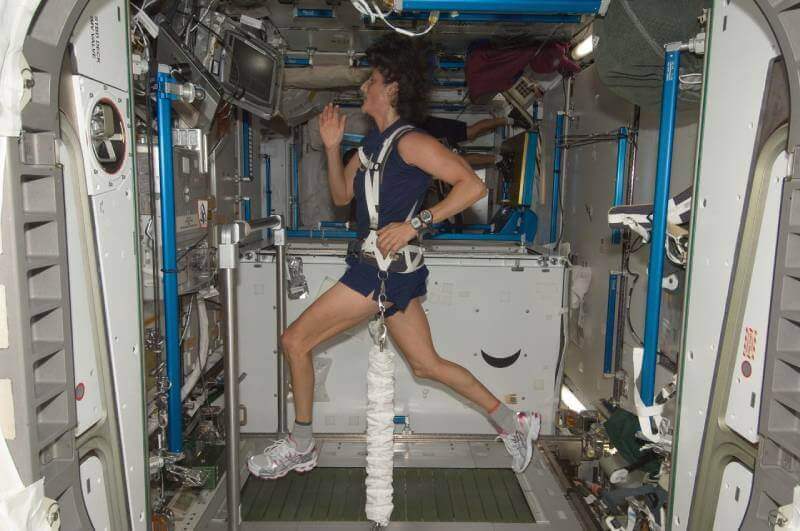How much time do you spend working out each week? Most gym rats exercise for 60 to 90 minutes three or four times a week to stay in shape. Did you know an astronaut spends around 2.5 hours exercising every day?
Why and how do astronauts exercise in space? After all, you can’t just grab a set of dumbbells and do some curls or pistol squats in a microgravity environment. In space, aboard the ISS, astronauts’ muscular and skeletal systems don’t need to support the weight of their bodies.
The Importance of Excercise in Space
In space, the cardiovascular system also doesn’t experience much stimulation, and it becomes idle since it doesn’t need to make the same effort to drive blood around the body as it does on Earth. Astronauts must work out daily to mitigate the adverse physiological effects of living in a microgravity environment.
Exercise has the following benefits for astronauts:
- It retains the strength of the muscular system, preventing atrophy.
- It stops the deterioration of the skeletal system and reduction in bone density.
- It keeps them strong and flexible on spacewalks.
- It keeps them physically capable of carrying out emergency landing procedures.
Despite working out for 150 minutes each day, most astronauts returning to Earth have experienced muscular atrophy and deterioration in cardiovascular performance during their stay at the ISS or on Shuttle missions.
Astronauts can lose up to 1% of their skeletal bone density monthly in a microgravity environment. That loss rate is 12 times what the average human experiences on Earth. According to NASA, after spending six months in space, an astronaut can lose 11% to 17% of their physical strength and 2% to 7% of their bone density.
The adverse physical results of a long space journey in a weightless environment are similar to the effects of the degenerative bone disease, osteoporosis. While the physiological effects of space missions are dramatic, they’re reversible, and most astronauts eventually recover after returning to Earth.
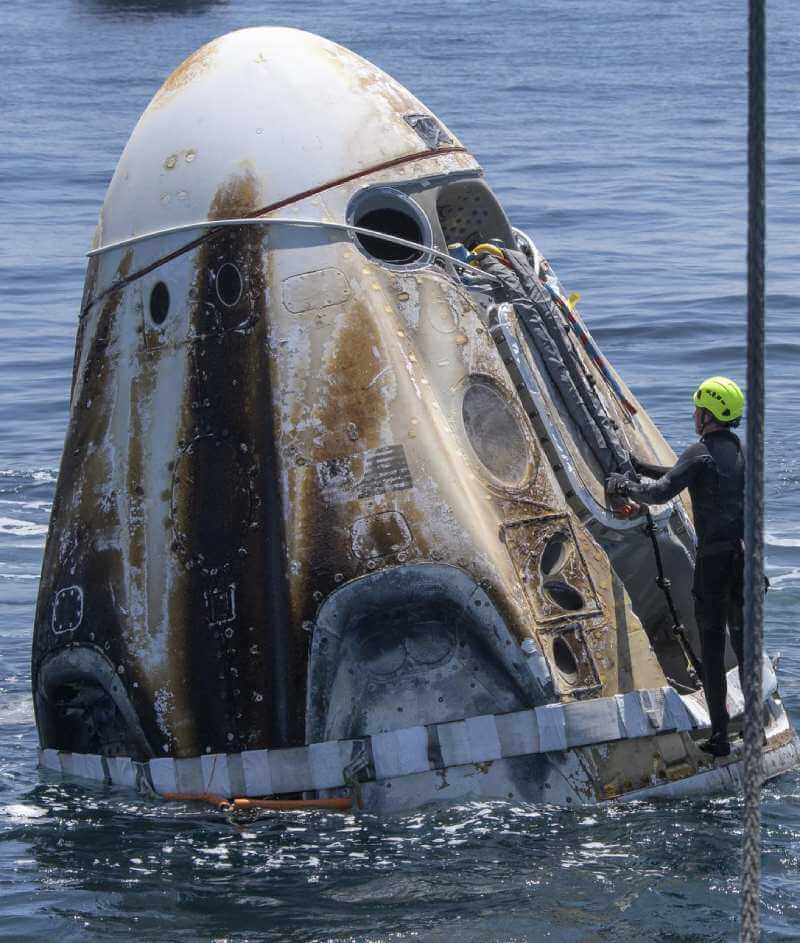
Previously, NASA would measure the astronaut’s physical fitness before and after missions to the ISS. However, new panoramic imaging and ultrasound technology allow ISS crew members to conduct personal fitness and physiological assessment aboard the station.
The “SPRINT“, also known as Integrated Resistance and Aerobic Training Study, study evaluates the efficacy of astronauts’ training programs, alternating between low-volume, aerobic, and high-intensity exercise sessions. SPRINT helps astronauts mitigate the effects of physiological degradation during space travel.
Excercise Equipment Astronauts Use In Space
Astronauts use different excercise equipment for different reasons. The International Space Station provides astronauts with a range of specialized equipment and resources to effectively maintain their fitness levels during their time in space. So, what equipment do astronauts use to work out on the ISS?
COLBERT (Combined Operational Load Bearing External Resistance Treadmill)
COLBERT is the astronaut’s go-to exercise machine for maintaining cardiovascular fitness aboard the ISS. It mounts to a vibration isolation system, allowing astronauts to run without creating vibrations that might disrupt experiments in adjacent science labs.
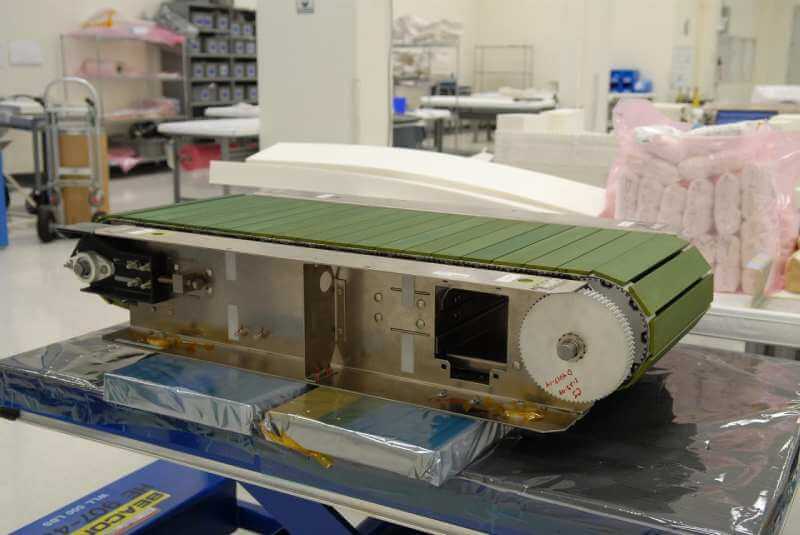
The astronaut harnesses themselves into position when using COLBERT, and the average workout on the machine burns between 250 to 500 calories, depending on the intensity of their performance. COLBERT operates at a top speed of 12.4 mph, with the astronaut’s average workout being at a pace of between 4 mph and to 8-mph.
Sunita “Suni” Williams has 20 years of experience as a NASA astronaut, spending over 300 days in space during her career. Williams logged over 50 hours on spacewalk assignments and is well-versed with COLBERT. In fact, she was the first astronaut to run the Boston Marathon in space.
In 2007, Suni qualified for the race but was on a space mission during the day of the 26.2-mile marathon. After her sister contacted the officials organizing the race, they allowed her to compete, but running on the COLBERT instead of the roads around Boston.
ARED (Advanced Resistive Exercise Device)
The ISS doesn’t have a weight room aboard the station. There’s no way for astronauts to hit the bench press or squat rack to keep their muscles from feeling the effects of atrophy. Instead, astronauts rely on the ARED to keep their upper and lower bodies strong and in shape in space.
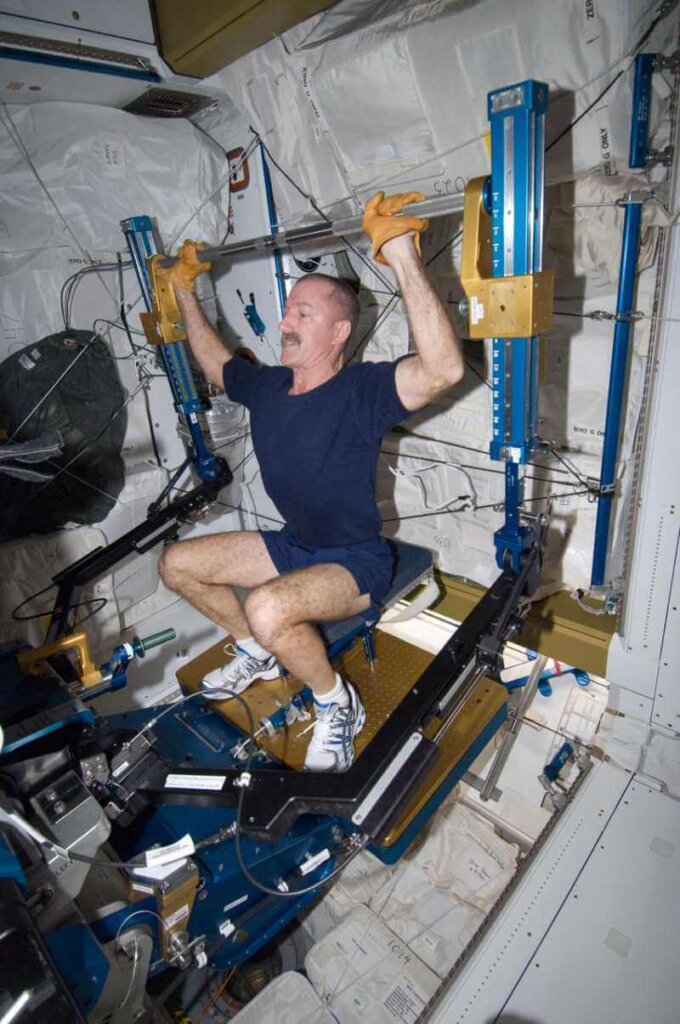
This system relies on resistance rather than weights to stimulate the muscular system during a workout. The ARED allows the astronaut to complete pushing, pulling, and squatting exercises. Space Shuttle mission STS-126 delivered the ARED system to the ISS in November 2008.
The equipment consists of two pistol-driven, evacuated canisters driven by a flywheel mechanism. Astronauts configure ARED to perform squats, deadlifts, calf raises, and biceps curls, giving them everything they need to stay in shape in space.
An astronaut experiences resistance as they pull the rods. It’s a similar concept to pulling back on a syringe plunger if you put your finger over the opening in the front. The piston’s angle in the ARED determines the rod length in the canister, increasing or decreasing the load to the astronaut’s settings on the machine. The ARED has a maximum load resistance of 600 lbs.
Before the introduction of the ARED, astronauts would use a band-operated resistance system. According to astronaut reports, the ARED is much more effective than the older band system.
CEVIS (Cycle Ergometer with Vibration Isolations and Stabilization System)
The CEVIS is the ISS version of an exercise bike, minus the seat. Astronauts can’t sit down in microgravity environments. The astronaut straps themselves into the device to keep themselves in position when using the CEVIS, allowing them to cycle upright.
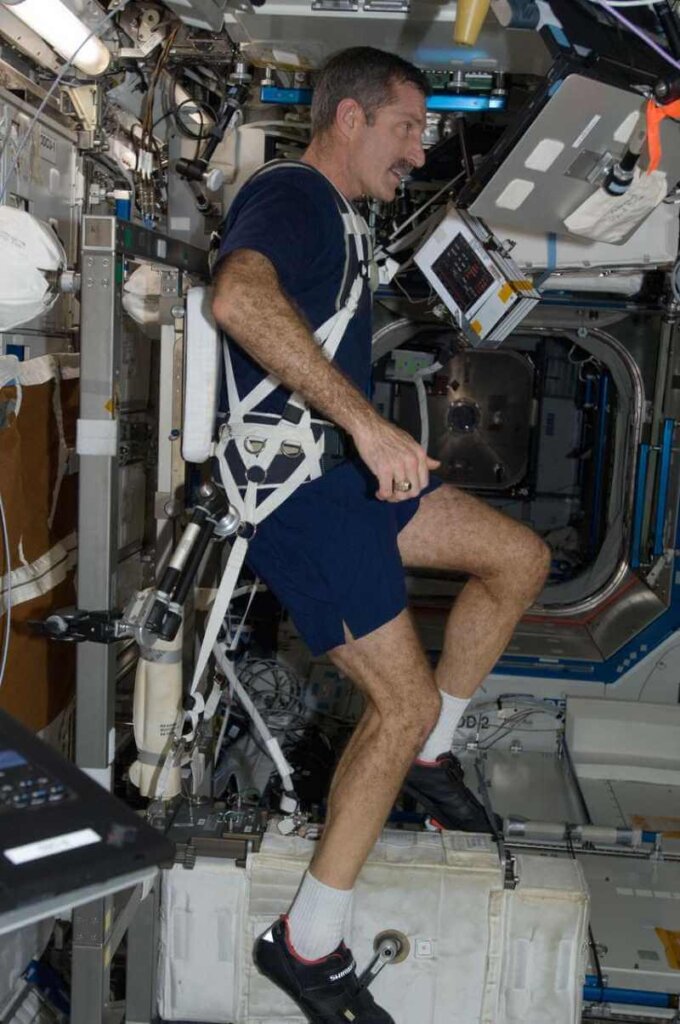
The CEVIS features adjustable load resistance to increase or decrease workout intensity when using the device. CEVIS also operates on a vibration isolator to eliminate vibrations in the ISS.
Using Astronaut Workouts to Help Cancer Patients
Astronauts aren’t the only people that can benefit from NASA-approved exercise programs and techniques. New research shows that the countermeasures program implemented by astronauts before, during, and after space missions could help cancer patients after they complete chemotherapy treatments for the disease.
There are remarkable similarities between the impact of space travel and chemotherapy on the physiology of astronauts and cancer patients. Both groups experience a loss of bone density and muscle mass and changes in cardiovascular function.
Astronauts sometimes experience a condition called “Space Fog,” where they find it challenging to focus due to the impacts of microgravity on their cognition in a space environment. Cancer patients also experience a similar effect known as “Chemo Brain” after undergoing treatment.
The countermeasures program from NASA has applications in cancer patients, allowing them to restore their physiological health after undergoing chemotherapy.
Conclusion
Fitness and working out are important to our health on Earth, but even more important to astronauts in space. Thanks to the progression of technology, astronauts can stay fit and healthy on missions. From cardio to resistance training, astronauts work just as hard on their bodies as they do on the science.
Without the ability to work out in microgravity environments, astronauts would be a shell of their former selves when returning to Earth. Fortunately, they have unique equipment and specialized training programs to help them mitigate the effects of living in space.
If you ever see the ISS flying overhead on a clear night, imagine that the astronauts could be in the middle of a workout.

